Whenever I am living through a period like this one that I know people will someday look back on as “history,” it makes me even more curious about my ancestors and their experiences in a world we look back on today. While doing a little ancestry research this morning to get my head out of today’s pandemic, I realized 100 years ago today, April 4, 1920, was Easter Sunday.
I was curious what I would find if I could go back and visit with some of my ancestors who were living during that time. While it was a fun exercise, I didn’t find much relief from the pandemic, as I discovered many of these families were dealing with deaths, likely from the Spanish flu. Lasting from January 1918 to December 1920, it infected 500 million people – about a quarter of the world’s population at the time.
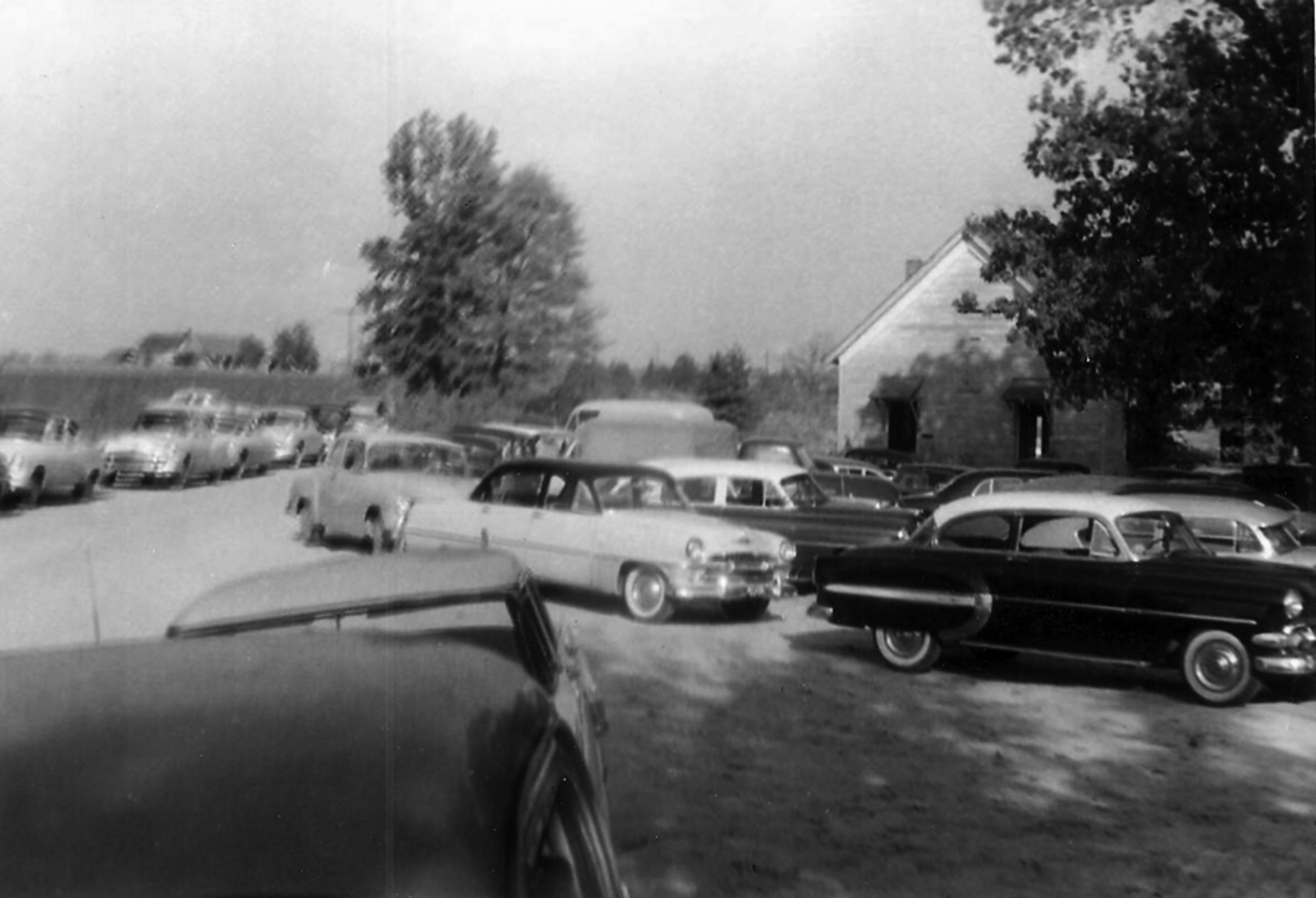
I would begin my visit to 1920 at Holly Grove Baptist Church on Poplar Corner Road. An Easter Sunday morning church service packed with family members would likely be a great way to start tracking some of these people down.
The land where the church sits had been donated to the community for a one-room schoolhouse by Nancy Johnson Castellaw, my third great-grandmother. Nancy was the daughter of Charles Randell Johnson and his wife Louisa Woods Johnson who lived in the Johnson Grove community, which is slightly northeast of Brownsville near Alamo, Tennessee in what would become Crockett County. My father, Bob Williams, and I once went exploring there to see what connections we could find, and discovered many of our Castellaw and Johnson people buried in the cemetery there.
Nancy’s grandfather, Frances M. Wood, was one of the original settlers of Crockett County and her father, Charles R. Johnson, donated the land on which the Johnson Grove Church was built. Nancy’s father died on April 14, 1864, and in his will he left property and slaves to his nine heirs, including Nancy. His will stated he left Nancy “negro woman Manda & Cherry valued at $675.” Of course, those slaves were actually already free in 1864. If I could find her on that Easter Sunday morning, I would ask Nancy what she remembered about growing up during the time of slavery and get more details about her life in the 55 years since the Civil War ended.

After the war, she married Tom Castellaw, a son of Thomas Jefferson Castellaw. Tom fought as part of the 7th Tennessee Volunteer Cavalry Regiment under Colonel William L. Duckworth. They had nine children together before he died in 1879 at the age of 37. Nancy married one of Tom’s half-brothers, John Edward Castellaw, in 1888. John Edward had a particularly heavy blow in his life as his first wife — and Nancy’s sister — Margaret Wood Johnson died in 1870 along with three of their four children: Mary L. (1856-1870), William R. (1859-1970), and Dicy A. (1862-1870). They were possibly victims of yellow fever that killed scores of people around that time, especially in low-lying Delta farmland around the Mississippi River where mosquitos were plentiful.
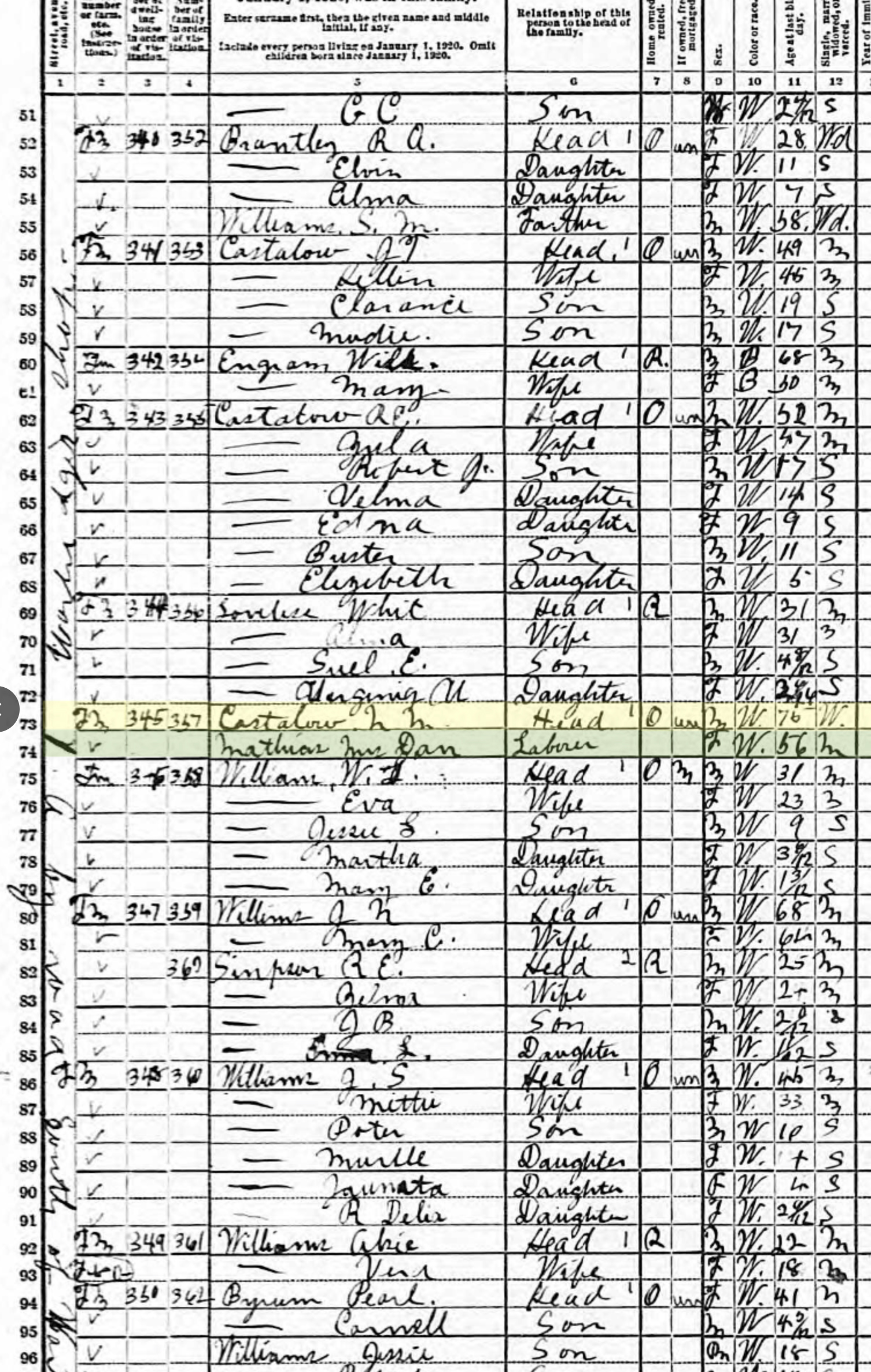
John Edward died in 1896 and Nancy didn’t remarry. The 1920 census lists her as a 75-year-old widow living as head of her household with her 56-year-old housekeeper, Mrs. Dan Mathias. Her home was near several of her children and grandchildren around the church, and I see many other names of families in my line living all around her. On Easter Sunday of 1920, Nancy only has nine months left to live, so I would be getting to her just in time.
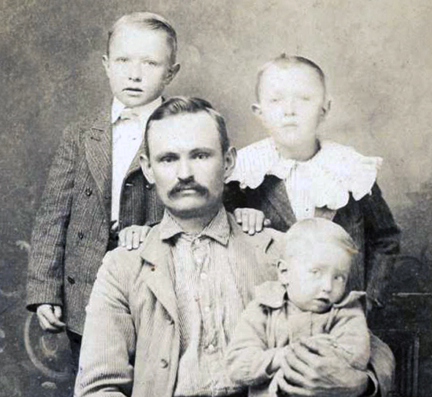
Nearby, I’ll find Nancy’s son, Bob Castellaw. He’s 52 in 1920 and living with his wife, Zula Zera Watridge Castellaw, who is 47. In addition to farming, he owns and operates one of the many small stores in the community. My grandmother, Elizabeth Castellaw, is only five that Easter Sunday mornng. As the baby of the family, she used to joke that she was spoiled by her father, so I would love to see the dynamic going on there. Her father suffered from some sort of mental illness later in life that resulted in him killing his wife, Zula, so I would talk to him to see if any signs of the tragedy to come were evident. After the tragedy, he lived out the rest of his life at Western State Mental Hospital.

Interestingly, Nancy was listed on the 1920 census right next to my paternal great-grandfather, 31-year-old Will Williams, and his second wife, 23-year-old Eva. My grandfather, Bo Williams, was nine at this time, so he was living very close to the grandmother of the little girl who would grow up to be his wife. Bo’s mother, Janie Williamson, had died five years earlier. When Daddy Bo was in his late 90s, my wife, Michelle, asked him questions about his childhood. He remarked proudly that he never forgot his mother, so I would love to stop in and talk to him about his memories of her when they were still fresh.

The next stop would be about half-way down Poplar Corner Road to Zion Baptist Church to check in on my maternal great grandparents, William “Willie” Day Brantley and Allie Urn Marbury Brantley who we all called Mama Allie and Granddaddy Willie. They had married four years earlier when he was 19 and she was 18 (Side note: I’ve claimed Granddaddy Willie as my grandfather name).
According to notes on the 1920 census, they were living “on a by road north of Hardy Cobbs’.”

Their oldest daughter Virginia, my maternal grandmother, was two and her sister Cordelia was six months old. They were living next door to Archie and Mary Castellaw Brantley and the family matriarch, Margaret Rebecca Steele Brantley. They were all living and working on small farms on what is now called Brantley Road. Years later, their youngest daughter, Betty Brantley Sullivan, wrote an article about her childhood in which she noted:
“My folks raised most of our food stuff. They killed and cured our pork and canned or dried the fruit from the orchard. Vegetables from the garden and peaches were also canned. We raised chickens and the cows were milked twice a day to provide fresh milk and butter. There was not a lot bought from the store; only flour, meal, etc…I had biscuits ‘patted out.’ They weren’t rolled and cut with the biscuit cutter, and moma used plain flour. On the biscuits, I had fried country ham and sometimes fresh sausage when in season, homemade butter and preserves or jelly…my playmate Sunshine Cobb used to say, ‘I’d rather have Aunt Allie’s biscuits than cake.’”
I would certainly want to stop in at the Brantley house for Easter Sunday lunch. Hopefully, Willie’s grandmother, 70-year-old Margaret Rebecca Steele Brantley, will be there. One thing I’ve always found interesting is that three of her sons each married a daughter of John Dawson Castellaw. Archie Brantley married Mary Castellaw, Walter Brantley married Emily Castellaw and Viv Brantley married Josephine Castellaw.

Margaret’s husband and my second great-grandfather, Henry Brantley, with whom she had 10 children, suffered from what is now thought to have been Parkinson’s Disease at the end of his life and had only passed away two years before Easter 1920. At the time of his death, he and Margaret had 24 grandchildren, so this was a very large family.
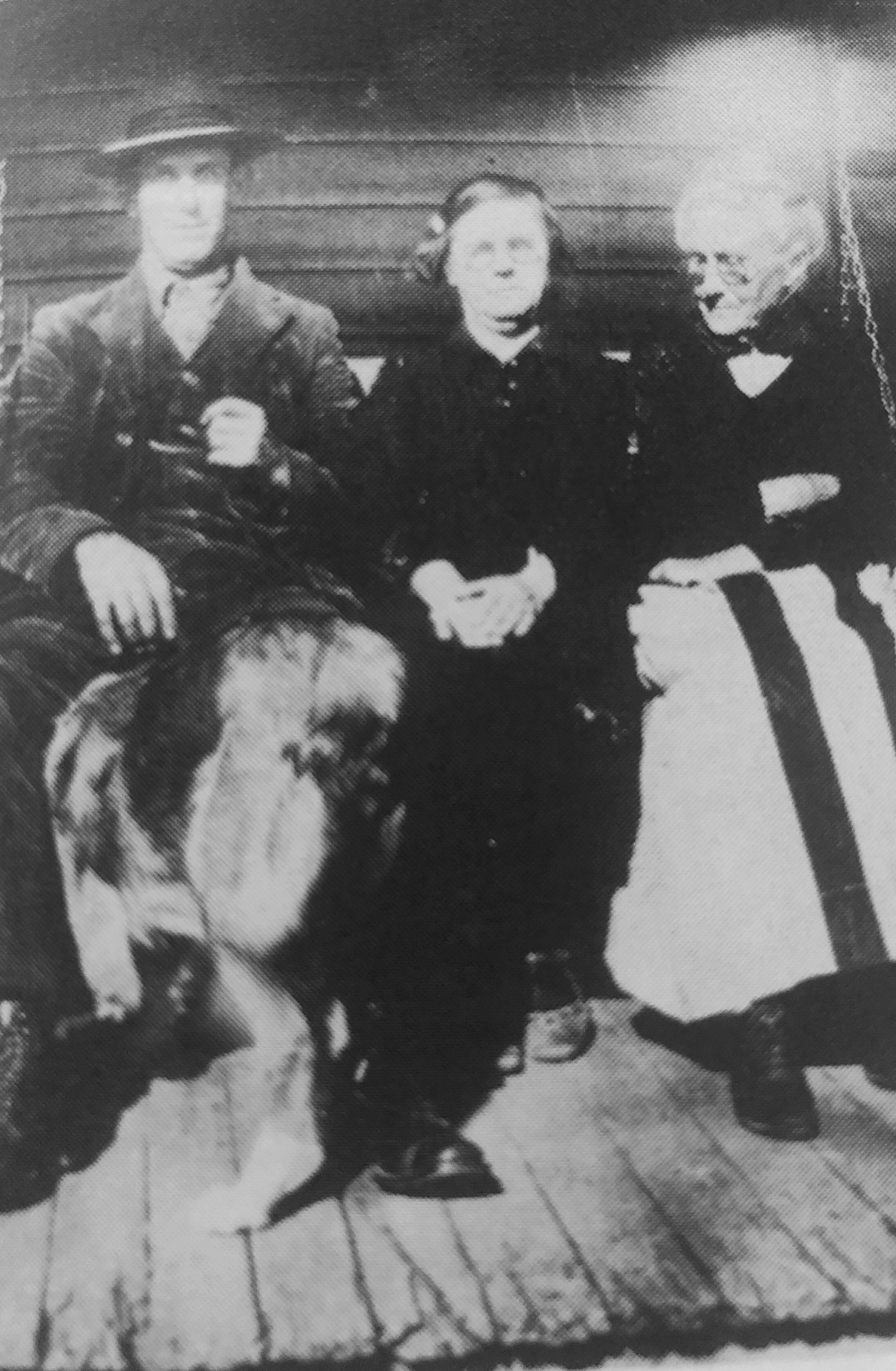
When I am there in 1920, I would find Margaret living with her son and daughter-in-law, Archie and Mary, and their dog, “Jeff.”
On that Easter Sunday morning, Margaret was still mourning the death of her son, Reginald A. Brantley, who died just a year earlier at the age of 33 of pneumonia brought on by influenza. It’s likely this was the Spanish flu that we hear so much about during this time of the coronavirus and COVID-19.

Henry, Reginald and others in this family that had passed away by 1920 were buried in a family cemetery near their homes that would eventually sit in a small clump of trees in the middle of a cotton field. Margaret would be buried their 10 years later at the age of 80.

When I first visited that cemetery in 2012, there was an old conch shell sitting on the top of her and Henry’s headstone. If I got to spend a little time with her in 1920, I would see if I could find out if there was some sort of significance of that shell I would later discover. I have wondered if the shell was something that Henry or Margaret’s parents brought to Haywood County from their home in North Carolina that was near the ocean.
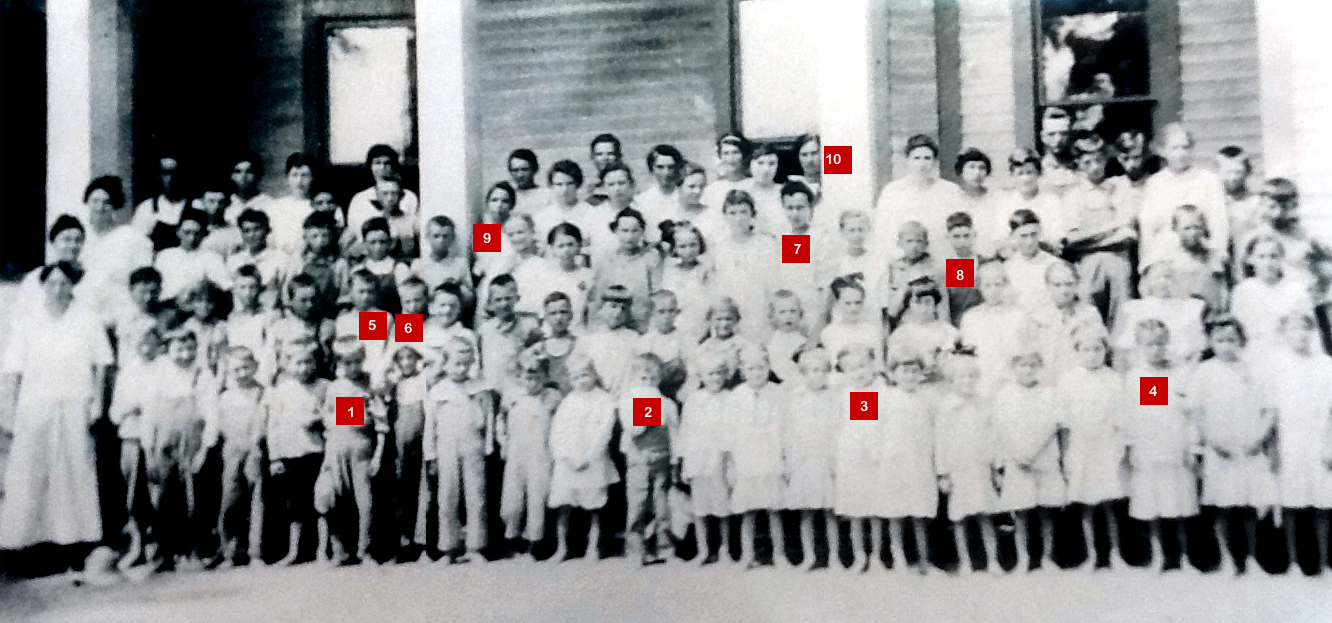
1. Leslie Fowler
2. Robert Brantley, a son of Vivian Brantley and his wife Joseph Castellaw
3. Blanch Lovelace, the sister of my grandfather, Guy Lovelace
4. Camillia Watridge, daughter of Champ Watridge
5. Joe Watridge, son of Champ Watridge
6. Ovid Lovelace, brother of my grandfather, Guy Lovelace
7. Clara Brantley, sister of my great-grandfather, Willie Brantley
8. Guy Brantley, brother of my great- grandfather, Willie Brantley
9. Mabel Marbury, sister of my great-grandmother, Allie Marbury Brantley
10. Gladys Brantley, sister of my great grandfather, “Willie” Brantley
Click here for a larger version of the photo
Somewhere along in here on Poplar Corner Road is Centerville School. Built in 1910, it’s where most of my ancestors who were children around this time attended. According to Martha Jones self-published book, “A Journey Into Yesteryears,” the school consisted of three rooms with a stage in the large center room. Jones also includes a story from my great-aunt Marie Lovelace Carlton, sister of my grandfather, Guy Lovelace. Aunt Marie shared that there was a peach tree outside the window of the school and one of her teachers, Irene Booth, would threaten to give them a little “peach tree tea.” That meant a whipping from the limb of the peach tree.
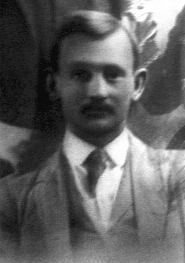
Living on what the census calls “Cobb Switch to Centerville School” is the family of my great-grandmother Allie Marbury Brantley. Hardy J. Marbury is 47, his wife, Lena, is 50 and Mama Allie’s sister, Mable, is 19. Also living with them is a Patterson, who is 43. They are living next door to 79-year-old Simeon “Sim” A. Cobb and his 49-year-old wife, Caroline. She was Sim’s third wife, and he married her when he was 63 and she was 32. Sim left behind a very detailed diary that includes references to many of my ancestors. Thankfully, Joe E. Cobb included much of the diary in his book “Nicholas Cobb: descendants, neighbors, and relatives, 1613-1983.”
I need to get up the road to Zion Baptist Church before training union begins at 6 p.m., but first I want to stop off and see what the Cobb Family Cemetery looks like in 1920. The land was designated as a cemetery by my third great-grandfather, John Hardy Cobb. He or his wife, Harriet Castellaw Cobb, recorded in their family Bible that they departed for Haywood County, Tennessee from Bertie County, North Carolina on March 6, 1834 and arrived April 22, 1834. Their journey in a covered wagon took nearly 50 days. Harriet’s father, John Dawson Castellaw, led many wagon trains from Bertie County to Haywood County then settled there himself in 1834, along with all my other ancestors. The cemetery is filled with members of the Castellaw, Watridge and Cobb families, among others. Today, many of the headstones are gone, although we do have a decent record of who is buried there.
The freshest grave would be the one of Thomas A. Cobb, son of Tom and Bet Cobb. He died at age 42 in Februrary of the Spanish flu, leaving behind two young sons. One of those sons, Bernie Cobb, would grow up and write “The History of Zion Baptist Church,” a book I frequently turn to when researching.
Another fresh grave in the Cobb cemetery is that of Virginia Estelle “Essie” Cobb Williams who had died just four months earlier on Dec. 18, 1919, also of the Spanish flu. Her death certificate notes that she died because of the formation of abbesses in her lungs from the flu. She was a daughter of John Charles Warren Cobb and Penelope Trottman White and a sister of Hardy Cobb. In 1900, she had become the third wife of my second great-grandfather, George Dempsey Williams. Together they had a daughter named Mary Lorene Williams. She married Henry Earl Brantley who was a son of one of those Castallaw/Brantley sibling unions: Walter Brantley and Emily Castellaw. It’s possible I may get a glimpse of them at the cemetery that afternoon paying their respects at Essie’s grave. In 1936 Lorene will die of acute appendicitis at just 34 years old.
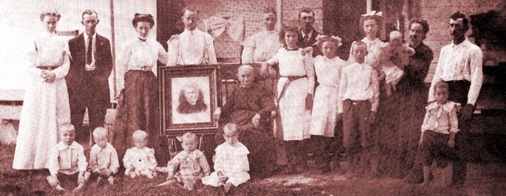
Across the road from the Cobb Family Cemetery is the house of my second great-grandparents, Henry Preston Brantley and Mary Etta Cobb, who are the parents of Granddaddy Willie. The house they are living in had been built by Tom Cobb. As I wrote earlier, my Granddaddy Willie and Mama Allie were already married and living back up the road, but in 1920, Preston and Mary Brantley had several children still living at home. Gladys is 24, Clara is 17, Guy is 15 and Mary is 11. Gladys and Guy will never marry and will live the rest of their lives in that house. Guy will live there until 1994 when he died at age 90, so I have always regretted not being into genealogy before he died so I could talk to him about our mutual ancestors. I’ve been told he was very smart and liked to read, so I would love to hear the stories he had to share, especially about the early settlers.
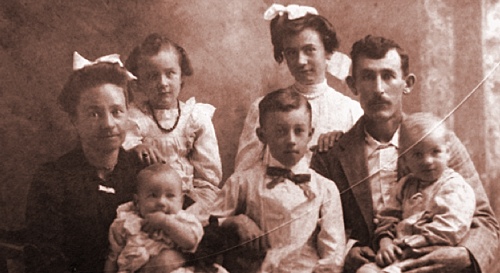
Uncle Guy’s mother and my second great-grandmother, Mary Etta Cobb Brantley was the daughter of Elizabeth Temperance Outlaw and Tom Cobb and the granddaughter of John Hardy Cobb who had arrived in Haywood County from Bertie County, North Carolina on April 22, 1834. Two of his sisters, Mourning Outlaw and Frances Steele and their families had already moved here earlier.
Mary Etta’s maternal grandfather was George W. Outlaw. In 1832, George, his wife Ludie Perry and his family began the trip from Bertie County along with his widowed father. Unfortunately, his father, Jacob Outlaw died in Knoxville before completing the journey. Ludie died in 1842 when her daughter Elizabeth was just six years old. George did not marry again until 1860. At age 57, he married 20-year-old Rowena Linley. George’s daughter and the rest of the family did not approve of the marriage, so in 1860 he moved with his new wife to Earle, Arkansas where he died just a year later.
Time is flying by, so I need to hustle to get to get to Zion Baptist Church. As I mentioned earlier, John Dawson Castellaw led large groups of families from Bertie County, North Carolina to Haywood County, Tennessee in the early 1830s to settle on some of the land made available by the Revolutionary War land grants and the removal of the Native Americans.
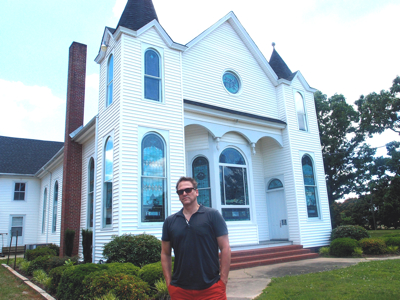
Many of those families had been members of Capeharts Baptist Church back in Bertie County, and one of the first things Castellaw and the others did when they arrived to their new home was to form Zion Baptist Church. To fill the pulpit of that church, they sent back to Bertie for a minister named George S. Williams who is my fourth great-grandfather.
1836 — Saturday before the 3rd Lords day in November 1836, the church convened in their new building and conference was opened by prayer. The church then proceeded to elect a pastor. It was moved by brother Leggett and seconded by Brother Rooks that Brother George Williams be our pastor for the ensuing year. Brother Outlaw was instructed to write Brother Williams informing him that he was chosen pastor of Zion Baptist Church and requesting him to attend the next meeting. “A History of Zion Church”
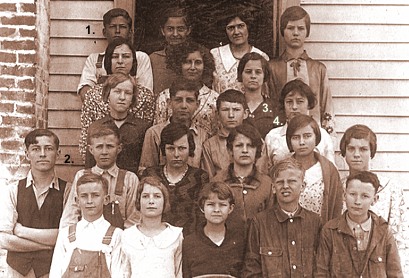
Near Zion Baptist Church is where my great-grandparents, James “Jim” Luther Lovelace and Ruby Fowler Lovelace are raising my grandfather, Guy Lovelace, who is three years old when I stop by in 1920. The family had recently completed the new house they were living in, He is surrounded by family. In addition to Guy, the children of Jim and Ruby still living at home were Ovid who is 13, Earl who is 12, Blanche who is 9, Homer who is 5 and Otha who is 6 months. Their youngest, my Aunt Marie, would not be born for another year.
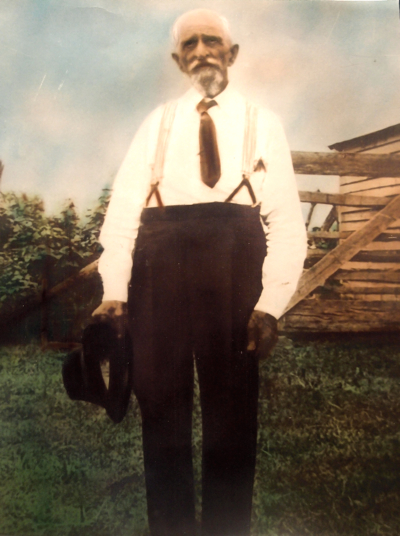
Ruby’s father, Lewis Fowler, is also living there as are Jim’s nephew’s Jissie and Leslie, ages 13 and 11. Lewis’ wife and my second great-grandmother, Sarah Patterson Fowler had passed away just a few months ago on Jan. 25. of pneumonia brought on by influenza. Yes, possibly another victim of the Spanish flu. She was 68.
On the farm next door is more family living in a house that was built around the time of the Civil War. Jim’s parents, Charlie and Nancy Lovelace, are living there with their children who were still at home: Lizzie who was 22, Volan who was 19, Berthie who was 15 and Floyd who was 2.
I would especially like to talk with Nancy Yelverton Lovelace to see what stories she may have of her ancestors. She descends from John Yelverton, Sr. who was born in England around 1685. By 1703, he had traveled to North Carolina where he married Elizabeth Blount. Elizabeth was the granddaughter of Captain James Blount, a member of the North Carolina House of Burgesses. The book, “Meade’s Families of Virginia” refers to the Yelvertons as one of the oldest and “best” families in pre-Revolutionary Virginia. Likely that knowledge and any of the verbal history had been lost by 1920, but I would sure love to find out.
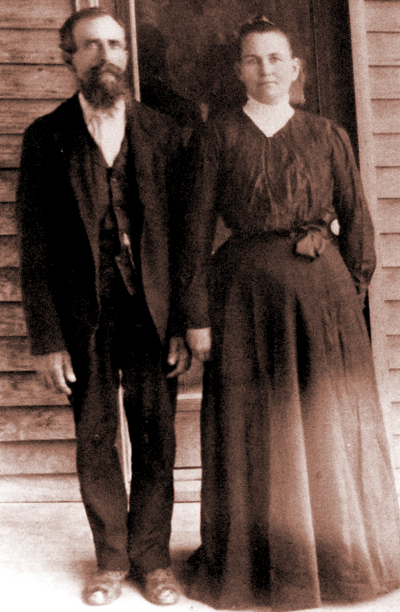
One piece of family history we do have is a record from 1890 when Zion Baptist Church appointed a committee that included D. W. Watridge to see “Bro. Charles Lovelace and Sister Martha Marbury about allowing dancing in their homes and report back.” It was true and they were “disciplined.” I would love to get the story behind that from Charlie himself. My grandmother gave Michelle his fiddle, and I just bet that’s connected to his dancing. It would be amazing to hear him play the fiddle in 1920 that would be hanging on our wall 100 years later.
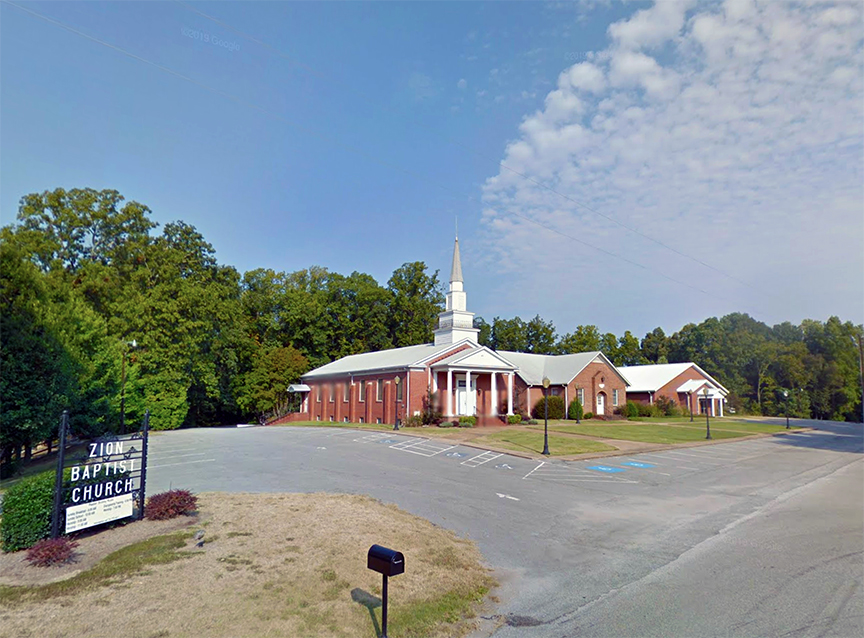
I would hope I could experience this family before I head to Zion Baptist Church for their Easter Sunday evening service. It’s the church where my mother was baptized and my parents were married, and many of the people I have mentioned here are buried in the church’s cemetery across the road. Michelle and I have a spot there so we will likely end up there as well.
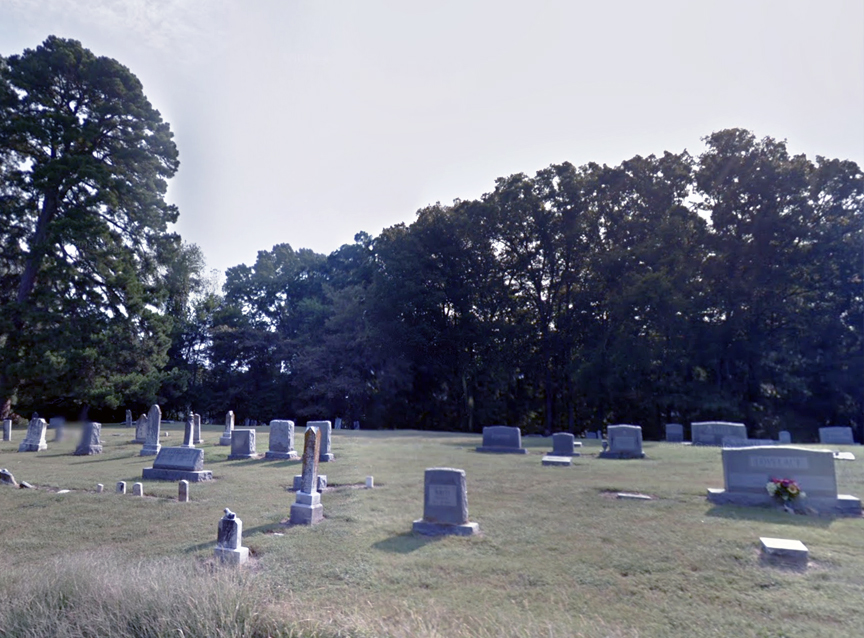
It’s there I will leave 1920 and head back here to April 2020 having experienced firsthand the lives of my ancestors 100 years in the past, and hopefully getting some answers and gaining some insight into the lives of those who came before me.
You can find more about all these family lines and others at HaywoodCountyLine.com or read more blog posts about the history of West Tennessee on my blog page.

As always I love your articles. Thank you for writing.